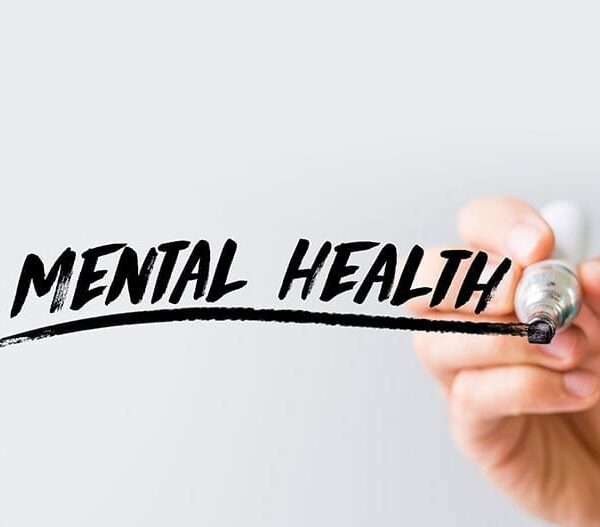Chronic dry eye is a common and often debilitating condition that affects millions of people worldwide. Characterized by a persistent lack of sufficient lubrication and moisture on the surface of the eye, it can lead to a variety of symptoms including redness, itching, burning, and a sensation of having something in the eye. If left untreated, chronic dry eye can result in more serious problems such as inflammation, abrasion of the corneal surface, and even vision problems. Fortunately, there are several strategies recommended by dry eye specialists to manage and alleviate this condition.
Understanding Chronic Dry Eye
Before diving into the management tips, it’s important to understand the underlying causes of chronic dry eye. The condition can be triggered by a variety of factors including age, hormonal changes, environmental conditions, medications, and underlying health conditions like rheumatoid arthritis or diabetes. The tear film, which is crucial for maintaining eye health, consists of three layers: the oily layer, the watery layer, and the mucous layer. Any imbalance in these layers can lead to dry eye symptoms.
Comprehensive Eye Examination
The first step in managing chronic dry eye is to get a comprehensive eye examination from a specialist. During the examination, the eye doctor will assess the quality and quantity of your tears, evaluate the condition of your eyelids, and check for any underlying conditions that might be contributing to your dry eyes. This detailed evaluation helps in formulating a personalized treatment plan.
Artificial Tears and Lubricating Eye Drops
One of the most common and immediate treatments for dry eye is the use of artificial tears and lubricating eye drops. These over-the-counter solutions can provide temporary relief by adding moisture to the eyes. However, it’s essential to choose preservative-free options, as preservatives can sometimes exacerbate dry eye symptoms with frequent use.
Prescription Medications
For more severe cases of chronic dry eye, dry eye specialists may prescribe medications. These can include anti-inflammatory drugs like cyclosporine (Restasis) or lifitegrast (Xiidra), which help to reduce inflammation and increase tear production. In some cases, corticosteroid eye drops may be used for short periods to manage acute inflammation.
Punctal Plugs
Punctal plugs are tiny, biocompatible devices that are inserted into the tear ducts to block drainage. By preventing tears from draining too quickly, they help keep the eyes moist for a longer period. This procedure is relatively simple and can provide significant relief for many patients with chronic dry eye.
Warm Compresses and Eyelid Hygiene
Maintaining good eyelid hygiene is crucial in managing chronic dry eye, especially if it is associated with blepharitis (inflammation of the eyelids). Regularly cleaning the eyelids with a gentle, non-irritating cleanser can help remove any debris or bacteria that might be contributing to the problem. Additionally, applying warm compresses can help to open up the oil glands in the eyelids, improving the quality of the tears and providing relief from dry eye symptoms.
Omega-3 Fatty Acids
Numerous studies have shown that omega-3 fatty acids can be beneficial for individuals with chronic dry eye. These healthy fats, found in fish oil and flaxseed oil, have anti-inflammatory properties that can help improve the function of the meibomian glands (oil-producing glands in the eyelids) and enhance tear production. Incorporating omega-3 supplements or foods rich in these fatty acids into your diet can be a simple and effective way to manage dry eye symptoms.
Environmental Adjustments
Making adjustments to your environment can also play a significant role in managing chronic dry eye. For instance, using a humidifier in your home or office can help maintain moisture in the air, preventing your eyes from drying out. Avoiding direct exposure to air conditioning, heaters, or fans can also reduce dry eye symptoms. Additionally, wearing wraparound sunglasses when outdoors can protect your eyes from wind, dust, and other irritants.
Hydration and Diet
Staying hydrated by drinking plenty of water throughout the day is essential for overall eye health. Dehydration can reduce tear production and exacerbate dry eye symptoms. Additionally, a diet rich in vitamins A, C, and E, as well as zinc and lutein, can support eye health and improve tear production. Foods such as carrots, leafy greens, nuts, and seeds are excellent choices for maintaining healthy eyes.
Blink More Frequently
In today’s digital age, prolonged screen time is a common cause of dry eye. Staring at a computer, tablet, or smartphone for extended periods can significantly reduce your blink rate, leading to dry eyes. Conscious blinking and following the 20-20-20 rule—taking a 20-second break to look at something 20 feet away every 20 minutes—can help keep your eyes moist and reduce strain.
Regular Follow-Ups
Chronic dry eye is a long-term condition that requires ongoing management and regular follow-ups with your eye doctor. These visits are crucial for monitoring the effectiveness of your treatment plan and making any necessary adjustments. Keeping track of your symptoms and communicating any changes to your specialist can help in fine-tuning your management strategy.
Stress Management and Sleep
Stress and lack of sleep can negatively impact eye health and exacerbate dry eye symptoms. Engaging in stress-reducing activities such as yoga, meditation, or deep breathing exercises can improve overall well-being and reduce dry eye discomfort. Ensuring you get adequate, quality sleep each night allows your body, including your eyes, to rest and repair.
Conclusion
Managing chronic dry eye requires a multifaceted approach tailored to the individual’s specific needs and underlying causes. From over-the-counter artificial tears to prescription medications, lifestyle changes, and environmental adjustments, there are numerous strategies that can provide relief and improve quality of life. Regular consultations with a dry eye specialist are essential to ensure that your treatment plan is effective and up-to-date. By following these tips and staying proactive about eye health, individuals with chronic dry eye can find significant relief from their symptoms and maintain healthier, more comfortable eyes.
Incorporating these practices into daily life not only helps manage chronic dry eye but also promotes overall ocular health. With the guidance of an eye care professional and a commitment to self-care, it is possible to effectively manage chronic dry eye and enjoy a better quality of life.
FAQ
Q1: What causes chronic dry eye?
A1: Chronic dry eye can be caused by a variety of factors including age, hormonal changes, environmental conditions, certain medications, and underlying health conditions like rheumatoid arthritis or diabetes. The condition results from an imbalance in the tear film, which is made up of three layers: oily, watery, and mucous.
Q2: How do artificial tears help with dry eye?
A2: Artificial tears and lubricating eye drops provide temporary relief by adding moisture to the eyes. They help to supplement the natural tear film and alleviate symptoms such as dryness, burning, and itching. It’s important to use preservative-free options for frequent use to avoid potential irritation.
Q3: What prescription medications are used for chronic dry eye?
A3: Common prescription medications for chronic dry eye include anti-inflammatory drugs like cyclosporine (Restasis) and lifitegrast (Xiidra). These medications help reduce inflammation and increase tear production. Corticosteroid eye drops may also be used for short periods to manage acute inflammation.
Q4: What are punctal plugs and how do they work?
A4: Punctal plugs are small devices inserted into the tear ducts to block tear drainage. By preventing tears from draining too quickly, they help keep the eyes moist for a longer period. This procedure is simple and can provide significant relief for many chronic dry eye patients.
Q5: How can diet affect chronic dry eye?
A5: A diet rich in omega-3 fatty acids, vitamins A, C, and E, zinc, and lutein can support eye health and improve tear production. Foods such as fish, flaxseed oil, carrots, leafy greens, nuts, and seeds are beneficial for maintaining healthy eyes and managing dry eye symptoms.
Q6: What lifestyle changes can help manage chronic dry eye?
A6: Several lifestyle changes can help manage chronic dry eye, including:
- Using a humidifier to maintain moisture in the air.
- Avoiding direct exposure to air conditioning, heaters, or fans.
- Wearing wraparound sunglasses outdoors.
- Staying hydrated by drinking plenty of water.
- Practicing the 20-20-20 rule to reduce eye strain during screen time.
- Ensuring adequate, quality sleep and managing stress through activities like yoga and meditation.
Q7: Can stress and lack of sleep worsen dry eye symptoms?
A7: Yes, stress and lack of sleep can negatively impact eye health and exacerbate dry eye symptoms. Engaging in stress-reducing activities and ensuring adequate sleep can improve overall well-being and reduce dry eye discomfort.






